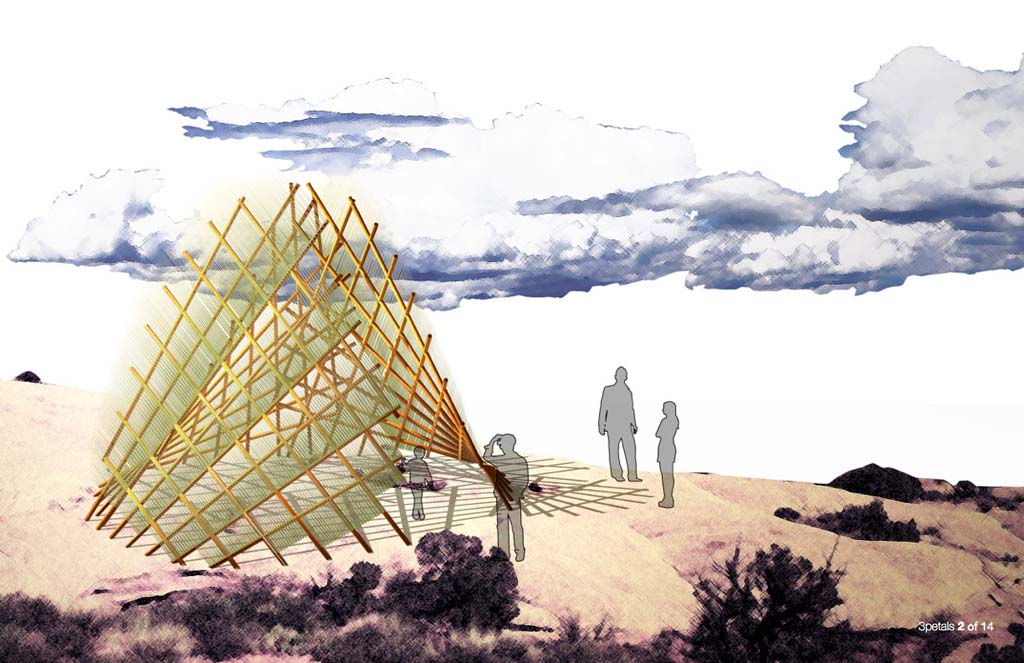ENCINITAS — A Jewish cultural tradition that started some thousands of years ago will be carried on this weekend at the Leichtag Foundation’s the Ranch when three finalists from a design contest begin building their winning Sukkah structures.
Of the several Sukkah designs (a sukkah is a temporary structure used by Jewish people during food gathering seasons) submitted to a panel of judges, three were selected to build their structures Oct. 5, coinciding with the Jewish holiday of Sukkot, which begins Oct. 8 and runs through Oct. 17.
Jessica Lee Vences, who was part of last year’s winning design team, served as a judge this time around.
“Having been on the other side I know how challenging it is to meet all of those requirements of what a Sukkah should be, but also be original,” she said.
“I was looking at whether they followed all of the rules,” she added.
The challenge of being creative all the while maintaining a sense of the tradition can be difficult, she said.
In one instance, there was a design that the judges all seemed to like, though it didn’t have one of the traditional components of a roof covering, and Vences said that if it was added, it would lose the whole concept.
“The restrictions, or the parameters that you have to design in also help to design,” Vences said. “When you have those constraints, it helps you to design better, I think,” she said.

For Sasha and Chris Varone, it was the first time they designed a Sukkah.
The couple, both licensed architects, wanted to do be able to create something without some of the building and zoning codes they face on a daily basis in their professional projects.
“What was fun about this,” said Chris, “is it doesn’t have all the limitations that we’re used to on a day-to-day basis. It was a chance to flex your design muscles and really worry about the space, the quality of light and the experience of the space more so than having to deal with all the other outside influences that influence our jobs.”
What they created was a seven-sided structure, with each side representing the seven days of the week and the seven-year cycle, explained Sasha.
Max Magac, one of two of the designers along with Sasha and Chris who come from San Diego, created a Sukkah that he called simply, “Three Petals.”
The petals refer to the three sides of his creation, which he said was based on the concepts of the competition: renewal, release and regeneration.
“Based on those ideas I started playing with forms and materials that I felt could accomplish something along those lines,” he said.
The end result was a hyperbolic parabola — a sort of shell that is structurally efficient, he said, which not only resembles a Native American tipi, but also a bud.
The tipi he added, was done out of an homage to Native Americans — the nomadic peoples of America.
That, largely because the Sukkahs were structures used by nomadic Jews.
The flowering bud is to signify the idea of renewal and harvest, he said.
As an architect, Chris said that absolutely he would use the design aspects of building a Sukkah into his future works.
“I think there are things that translate from the tiniest project to the largest project that don’t change,” he said. “The cross section of a space, heavy materials versus light materials, all those things can be translated from a tiny structure to a large building and I think this is a great case where you can study those things very quickly in a very small structure and get a lot of bang for your buck out what we’re trying to do.”
But in the end, the event helps the Jewish community come back to their roots, explained Vences. “It’s a huge opportunity to educate (them) on their history.”



